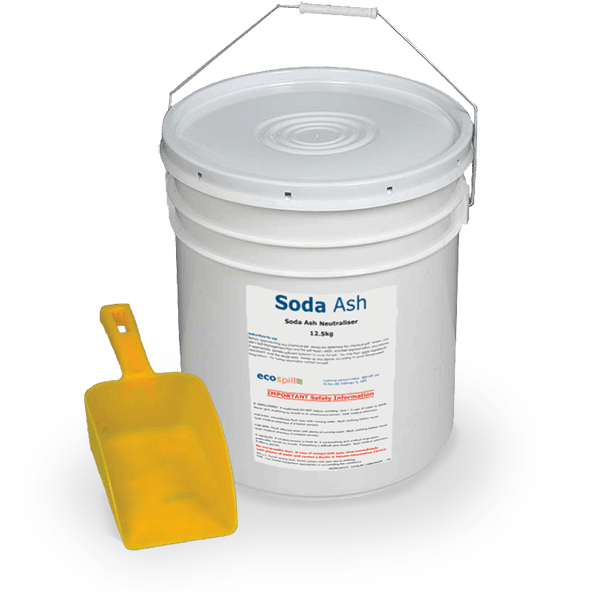How Acid Neutralisers Safeguard Your Workplace

In the dynamic environment of a workplace, safety should always be a top priority. Various chemicals and substances pose potential hazards, and one of the critical areas of concern is the presence of acids. Acidic substances can cause serious harm to both individuals and the environment. This blog explores the importance of acid neutralisers in safeguarding your workplace and the well-being of everyone within it.
Understanding Acidic Hazards
Acids are commonly found in many industries, ranging from laboratories to manufacturing plants. These corrosive substances can cause chemical burns, respiratory issues, and damage to equipment. Accidental spills, leaks, or exposure incidents can result in dire consequences, making it imperative for businesses to have robust safety measures in place.
What is an Acid Neutraliser?
An acid neutraliser, also known as a base, is an acidic neutralising substance designed to counteract the effects of acids. When acids come into contact with other substances, they can cause chemical reactions that produce harmful effects, such as burns, corrosion, and damage to materials. Acid neutralisers work by reacting with acids to neutralise their corrosive properties, transforming them into less harmful substances.
Types of Acid Neutralisers
There are various types of acid neutralisers, and their composition depends on the specific application and the type of acids they are designed to counteract. Some common types include:
Base Solutions
Basic substances, often in the form of alkaline solutions, can neutralise acids. Common bases used for this purpose include sodium bicarbonate (baking soda) and sodium hydroxide (lye).
Buffer Solutions
These solutions are designed to maintain a stable pH level, acting as a buffer against fluctuations caused by the addition of acids. Buffer solutions are often used in laboratory settings to maintain a specific pH range.
Solid Neutralising Agents
Solid materials, such as calcium carbonate (lime), can be used to neutralise acids. These may come in the form of powders, tablets, or granules and are applied directly to acid spills or areas where neutralisation is needed.
Gels or Foam
In some cases, gels or foams formulated with neutralising agents may be used to treat acid spills. These formulations adhere to surfaces, providing sustained neutralisation.
The choice of an acid neutraliser depends on factors such as the type of acids present, the application environment, and the desired level of neutralisation. It’s essential to follow safety guidelines and protocols when using acid neutralisers, and proper training should be provided to individuals who may be involved in handling them in the event of an acid spill or emergency.
Top Benefits of Using Acid Neautralisers
Using acid neutralisers offers a host of advantages:
Neutralising Acids
These substances work by neutralising the acidity of the spilt material, effectively reducing its corrosive properties.
Minimising Health Risks
By neutralising acids promptly, the potential for harm to human health is significantly reduced. This is especially crucial in laboratory settings where researchers and technicians work with various acids on a daily basis.
Protecting the Environment
Acid spills can also have detrimental effects on the environment. Acid neutralisers aid in preventing environmental contamination by neutralising the acidity before it can seep into the soil, water sources, or the air.
Preserving Equipment
In industrial settings, acids can cause extensive damage to equipment and infrastructure. Acid neutralisers not only protect human health but also contribute to the longevity and functionality of machinery and facilities.
Uses of Acid Neutralisers
Acid neutralisers find a wide range of applications across various industries and settings where acids are used or may pose a potential hazard. Some common applications include:
Laboratories
In scientific laboratories, researchers often work with acids as part of experiments and analyses. Acid neutralisers help ensure the safety of laboratory personnel in case of spills or accidental exposure.
Industrial Settings
Industries such as chemical manufacturing, metal processing, and electronics production may involve the use of acids. Acid neutralisers help mitigate the risks associated with accidental spills, leaks, or exposure incidents in these industrial environments.
Battery Maintenance
Batteries, especially lead-acid batteries, contain acidic electrolytes. Acid neutralisers are used to neutralise any spills or leaks that may occur during battery maintenance or handling.
Wastewater Treatment Plants
Acid neutralisers can be employed in wastewater treatment facilities to neutralise acidic effluents before discharge. This helps prevent environmental damage and ensures compliance with regulatory standards.
Emergency Response
Acid neutralisers are often included in emergency response kits or spill response plans. They provide a rapid and effective means of neutralising acids in the event of accidents or spills on roads, in transportation, or at industrial sites.
Educational Institutions
In educational settings, particularly in science classrooms and laboratories, acid neutralisers are essential for student safety during experiments involving acids.
Electroplating Facilities
Acidic solutions are commonly used in electroplating processes. Acid neutralisers help manage and neutralise spills or leaks, protecting workers and preventing environmental contamination.
Metal Pickling and Cleaning
Industries that involve metal pickling or cleaning processes often use acids. Acid neutralisers are utilised to neutralise any spills or residues, safeguarding equipment and ensuring a safe working environment.
Agricultural Applications
In agriculture, some fertilisers and soil amendments may be acidic. Acid neutralisers can be used to adjust soil pH and improve overall soil health.
Battery Recycling
During the recycling of batteries, acid neutralisers may be used to neutralise the acidic components in spent batteries, contributing to safer handling and disposal practices.
Enhance Workplace Safety with Ecospill’s Acid Neutralisers
The wide-ranging applications of acid neutralisers span across various sectors, ensuring a protective shield against the corrosive risks associated with acids. Whether you’re in laboratories, industrial facilities, or other environments dealing with acids, incorporating acid neutralisers is a proactive step towards fortifying workplace safety.
If you are looking for a reliable supplier of acid neutralisers in Australia, Ecospill has you covered. Our acid neutralisers are carefully designed for deployment in areas susceptible to acid spills, paving the way for a secure environment that facilitates safe cleanup and efficient absorption. For more information about our products, please visit our website.
